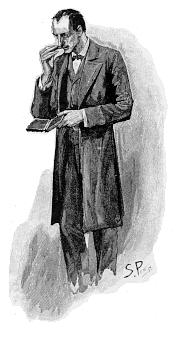Reining in creativity by “regularizing” work simplifies organizational life, but has a deadening effect on innovators.
In a debate on the explosion of American lawsuits a few years ago the famed law professor and trial lawyer Alan Dershowitz described one litigation strategy used by large corporate defendants as “papering the other side to death.” He meant, of course, that a lawyered-up organization can intimidate a plaintiff by requiring so much data and information that the cost of a “win” becomes too time-consuming.
The phrase has always stuck with me as a perfect representation of a common bureaucratic impulse. Paper has perhaps been replaced by online documents and files. Even so, there seems to be a natural tendency to bureaucratize even the simplest processes, ostensibly to be “uniform.” In fact rules have always functioned in part to mystify others into compliance. No one, for example, reads the “conditions of use” fine-print attached to nearly every downloaded application. But the sheer volume of their legalese lends authority to the source. Or try having your car or yourself serviced at a facility that is supposed to assure us to keep things in good working order. The front desk clerk taking down your information is now likely to go through a prolonged data-entry mode that leaves little time for a description of the problem that brought you in.
Rule-makers are ready to see any free choice as a vacuum that needs a procedure.
Our organizational life seems to thrive on hiring and promoting rule-makers: policy specialists, compliance officers, lawyers, professional writers, contract law specialists, employees charged with reviewing procedures, and especially organizational members–some with OCD tendencies that make them ready to see any free choice as a vacuum that needs a procedure. After all, someone must police the miscreants who would initiate a novel approach to a routine task.
“Procedures” nailed down in multiple pages of “steps” have the perverse effect of replacing individual initiative with a gloss of uniformity. Organizational culture naturally wants conformity, which is not always a bad thing. The problem is that the folks who write the rules seem to self-select, forming groups who are all too willing to bury the rest of us in paper.
Alas, this compulsion toward overwrought rule-making has not produced a comparable group of specialists motivated to reverse the process. So organizational culture typically embraces a snowballing accumulation of stifling regulations. What was once left to individual initiative often ends up as formal procedure.
In the field I know the urge to lay down mandatory “guidelines” cannot help but sap the energy of even the most creative teachers. The pedant in all of us loves to make guidelines, rubrics, checklists, worksheets, performance reviews, reviews of performance reviews, minimum standards, mission statements, instructions, directives, monthly reports, yearly updates, checklists, and criteria. People who might better spend their time on creative new scholarship often drift into generating handbooks of rules for even the most simple of professional tasks, such as observing a younger colleague’s teaching. The arc of a college teacher’s professional career is now tracked, classified, quantified, compared against a rubric, assessed by insiders, assessed by outsiders, tested in online questionnaires, burdened with filings to outside agencies, and itemized in reports to higher-ups. As a visiting professor at a small British college years ago I couldn’t teach what they did not already offer because, well, they didn’t offer it. It was not in the approved curriculum set up by a committee at another university. That can be true everywhere, especially if a university program has bought into a “certification” process that lays out uniform standards.
The rhetorician Kenneth Burke called this tendency to create regulatory flotsam “the bureaucratization of the imaginative.” It’s a perfect phrase. Reining in creativity by “regularizing” work simplifies organizational life, but has a deadening effect on innovators. In effect, the rhetoric of rules places a heavy burden on the most creative among us. Too often this impulse leads to the measurement of success in terms of compliance rather than initiative. And compliance is often a very low bar.

